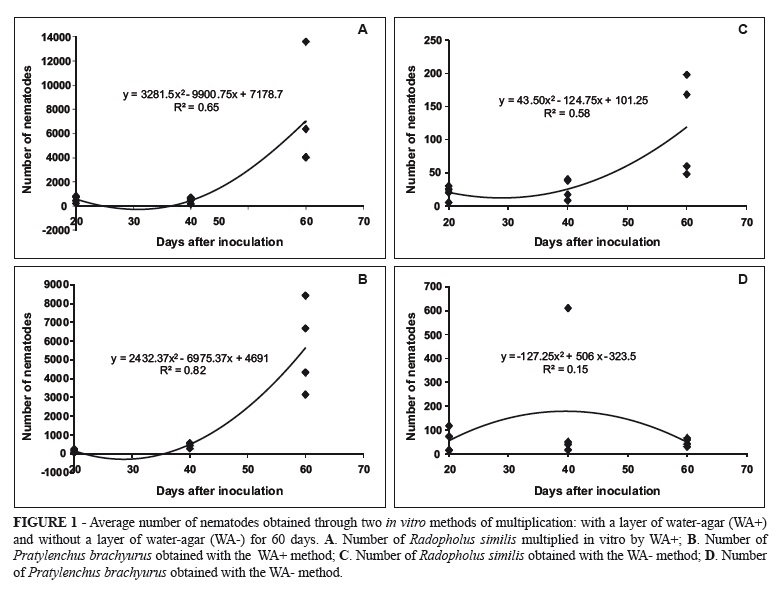The use of in vitro mass multiplication of nematodes under axenic conditions allows intensification of studies on taxonomy, biology, epidemiology and control of these pathogens. In the present study, two methods were compared for in vitro multiplication of two species of plant-parasitic nematodes, Radopholus similis and Pratylenchus brachyurus in 20, 40 and 60 day-periods. Both techniques involved the use of carrot cylinders placed in jars with lids, with water-agar in the bottom of the flasks (WA+) or without (WA-). In WA- the nematodes were treated with a 1% solution of ampicillin whilst for WA+ the axenization was carried out with a solution of mercuric chloride (0.01%), and streptomycin sulfate 0.02%. The WA+ condition was the most favorable for multiplication of both species of nematodes, resulting in a population increase of about 280 times for R. similis and 226 times for P. brachyurus in relation to the founding population of 25 individuals. For WA- a population increase of only five times after 60 days for R. similis and a duplication of the population after 60 days for P. brachyurus was obtained. Overall, the largest amount of nematodes occurred at 60 days after inoculation.
Burrowing nematode; in vitro multiplication; root lesion nematode


